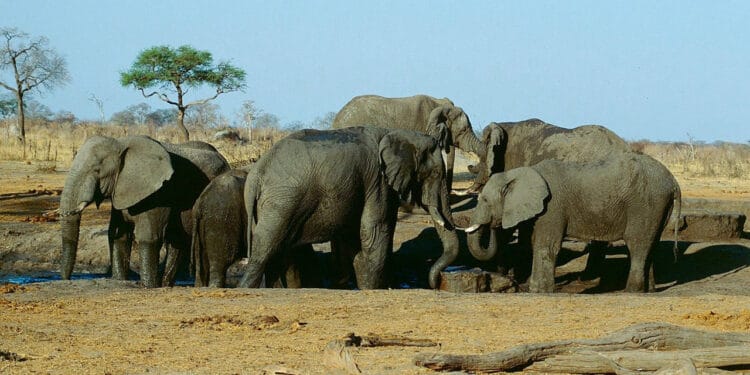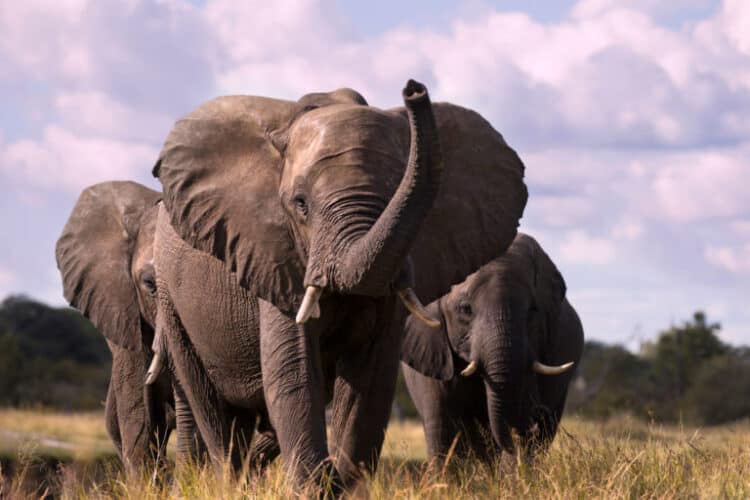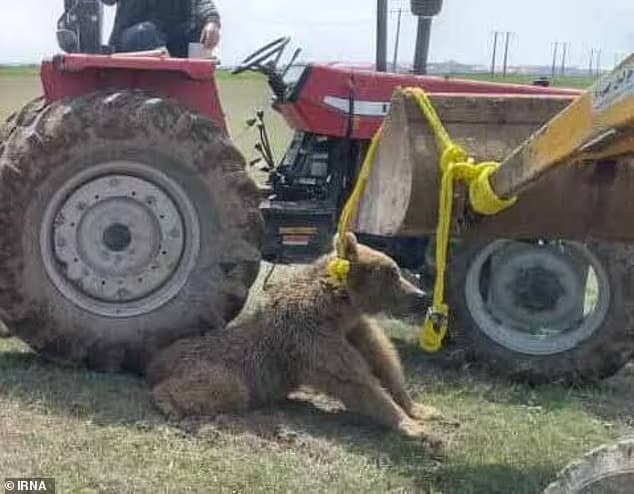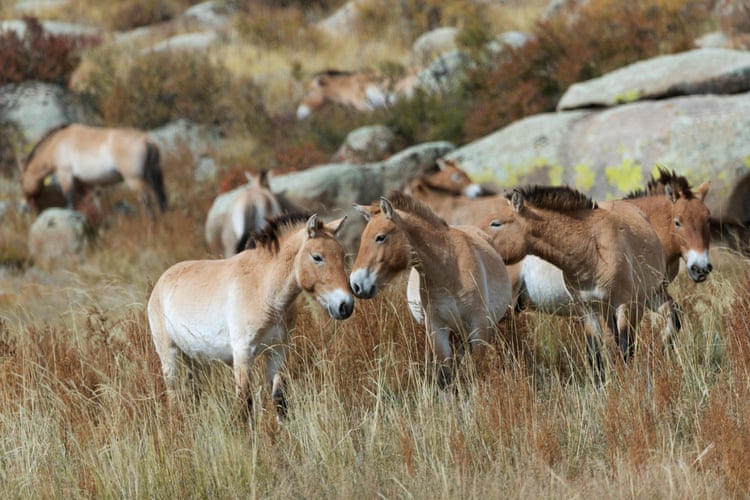Last week Zimbabwe announced that because of the drought that’s ravaging the country—and leaving four million Zimbabweans in need of food aid—it will “destock” its national parks and reserves by selling off wildlife.
The announcement by the Parks and Wildlife Management Authority (also known as Zimparks) doesn’t say when the sales would begin, nor does it specify which species would be offered and at what prices.
Some of the country’s animals can’t be sold off—those already protected against sale or hunting under the Parks and Wildlife Act, dating back to 1975. These include pangolins, pythons, and rhinos. Elephants and lions aren’t protected under the act, and elephants in particular, given their high value, would likely be priorities for sale.

Surprisingly, African wild dogs, which are endangered continent-wide, aren’t on Zimbabwe’s no-sale list. According to the International Union for Conservation of Nature, which sets the conservation status of species, these elusive canids are critically endangered and number only 3,000 to 5,500 continent-wide.
There’s no guarantee that the money would be directed towards those who need it most – Ross Harvey | South African Institute of International Affairs
Zimbabwe claims it must sell wildlife to replenish its coffers in the face of cash shortages so extreme that ATMs can’t be refilled, a scorching drought that’s causing the country’s exports of tobacco and maize to plummet, and a recent bid by the European Union to ban trophy hunting imports, which the government says would deprive the country of additional crucial revenue. (The U.S. Fish and Wildlife Service banned the import of elephant hunting trophies from Zimbabwe in 2014, on grounds that killing elephants for trophies there would not enhance the population’s survival, a requirement under the Endangered Species Act.)
But Ross Harvey, a senior researcher at the South African Institute of International Affairs, says that if Zimbabwe had been governed responsibly, there would be no need reason for it to put its wild animals up for sale. “Zimbabwe’s economy has been intensively mismanaged since the late 1990s, and the recent drought has had a more devastating effect than it otherwise would have if the economy was in fact being run properly.”
According to Harvey, “the idea that the sale of elephants would help to assuage the country’s economic woes is unworkable.” He notes that there’s no assurance that any money the government acquires from wildlife sales would be earmarked for conservation or drought relief. “In a system where lack of accountability has been baked in over a long time,” Harvey says, “there’s no guarantee that the money would be directed towards those who need it most.”
Zimbabwe has been criticized by wildlife and animal rights advocates for its previous arrangements to use animals as financial leverage. In July 2015 the country exported 24 wild elephants to China. How the money from the sale has been allocated remains an open question.
If numbers play into which animals to sell, impalas—an important food source for wild dogs—would be high on the list.
And the killing last year of Cecil the lion by Walter Palmer, an American dentist and trophy hunter, in a private reserve bordering Hwange National Park caused a furor that primed animal advocates to keep a critical eye on Zimbabwe.
But so far Zimparks has escaped widespread criticism for its new wildlife sale plan.
Will Wild Dogs Take a Hit?
One of the continent’s largest populations of wild dogs—also called painted dogs for the splotches of black, tan, and gold on their coats—is in Hwange National Park. Although their exact numbers are unknown, experts believe that the park holds about 150. Zimbabwe as a whole may have around 700.
Even without a crippling drought, survival is hard for wild dogs—they get caught in snares set by poachers seeking other animals, and many have been roadkill victims.
At the news of the Zimparks proposal to sell wildlife, Peter Blinston, the managing director of the Painted Dog Conservation, a nonprofit based in Hwange, said he didn’t believe that wild dogs would be put up for sale.
“Painted Dog Conservation has very good relations with Zimparks,” he said. “Thus our standing carries some weight, and if there was talk of dogs being on the for sale list, we would fight hard, and I suspect we would win.”
Speculating on what animals Zimparks would find attractive to sell, Blinston said there was a “perceived abundance” of elephants, yet their exact numbers, like those of wild dogs, are unknown. Estimates vary from a low of 60,000 to a high of 100,000.
He also pointed out that “in some areas impala are over-represented. I don’t think anything else is.” If numbers play into the decision about which animals to sell, elephants and impalas would be high on the list.
If impalas, an important food source for wild dogs, are sold and suffer drought losses as well, that would be a double whammy of deprivation for Zimbabwe’s already troubled painted dogs.
Zimparks and Zimbabwe’s Ministry of Environment, Water, and Climate did not respond to requests for comment.
This article was first published by National Geographic on 12 May 2016.






Leave a Reply